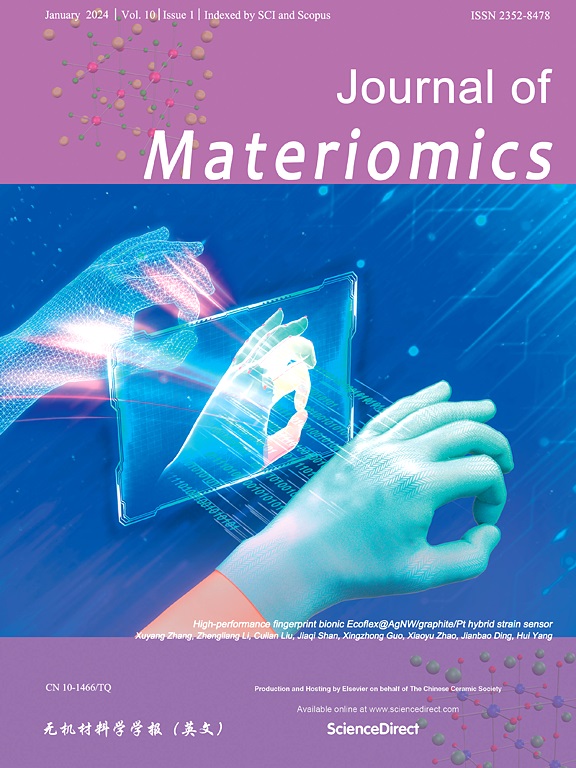人工智能揭示氧化铪基反铁电体材料的相变机制和性能预测
IF 8.4
1区 材料科学
Q1 CHEMISTRY, PHYSICAL
引用次数: 0
摘要
受限于传统试错法的低效率,尤其是在处理成千上万种候选材料时,迅速发现具有特定性能的材料仍然是当代材料研究的核心挑战。本研究采用了人工智能驱动的材料设计框架,以确定能赋予 HfO2 材料反铁电特性的掺杂剂。该策略将密度泛函理论(DFT)与机器学习(ML)技术相结合,根据临界电场迅速筛选出具有稳定反铁电特性的 HfO2 材料。这种方法旨在克服传统试错法和实验法的高成本和漫长周期。在 30 种未开发的掺杂剂中,确定了四种具有稳定反铁电特性的候选掺杂剂。随后的 DFT 分析突出了掺杂镓的特性,它在掺入氧化铪后显示出体积变化小、晶格变形最小和临界电场低等有利特性。这些发现表明了稳定反铁电性能的潜力。从本质上讲,我们建立了氧化铪掺杂剂的物理特性与其反铁电性能之间的相关性。这种方法有助于进行大规模的 ML 预测,使其适用于广泛的功能材料设计。本文章由计算机程序翻译,如有差异,请以英文原文为准。


Phase transition mechanism and property prediction of hafnium oxide-based antiferroelectric materials revealed by artificial intelligence
Constrained by the inefficiency of traditional trial-and-error methods, especially when dealing with thousands of candidate materials, the swift discovery of materials with specific properties remains a central challenge in contemporary materials research. This study employed an artificial intelligence-driven materials design framework for identifying dopants that impart antiferroelectric properties to HfO2 materials. This strategy integrates density functional theory (DFT) with machine learning (ML) techniques to swiftly screen HfO2 materials exhibiting stable antiferroelectric properties based on the critical electric field. This approach aims to overcome the high cost and lengthy cycles associated with traditional trial-and-error and experimental methods. Among 30 undeveloped dopants, four candidate dopants demonstrating stable antiferroelectric properties were identified. Subsequent DFT analysis highlighted the Ga dopant, which displayed favorable characteristics such as a small volume change, minimal lattice deformation, and a low critical electric field after incorporation into hafnium oxide. These findings suggest the potential for stable antiferroelectric performance. Essentially, we established a correlation between the physical characteristics of hafnium oxide dopants and their antiferroelectric performance. The approach facilitates large-scale ML predictions, rendering it applicable to a broad spectrum of functional material designs.
求助全文
通过发布文献求助,成功后即可免费获取论文全文。
去求助
来源期刊

Journal of Materiomics
Materials Science-Metals and Alloys
CiteScore
14.30
自引率
6.40%
发文量
331
审稿时长
37 days
期刊介绍:
The Journal of Materiomics is a peer-reviewed open-access journal that aims to serve as a forum for the continuous dissemination of research within the field of materials science. It particularly emphasizes systematic studies on the relationships between composition, processing, structure, property, and performance of advanced materials. The journal is supported by the Chinese Ceramic Society and is indexed in SCIE and Scopus. It is commonly referred to as J Materiomics.
 求助内容:
求助内容: 应助结果提醒方式:
应助结果提醒方式:


